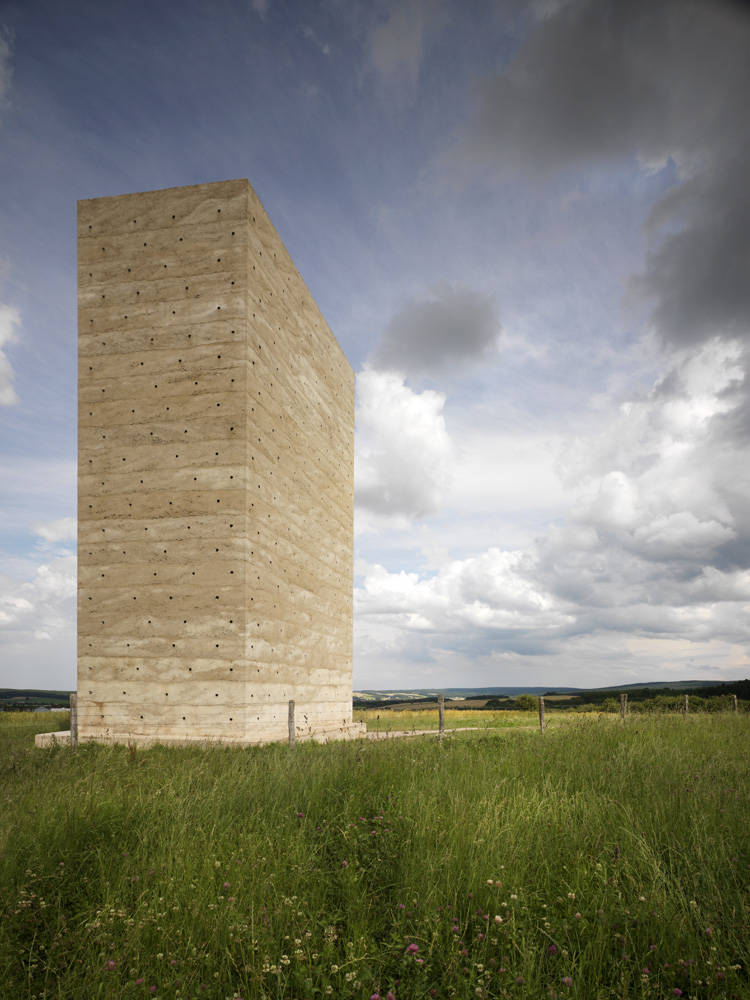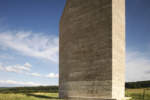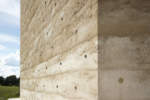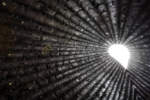On the occasion of the exhibition on Pier Luigi Nervi presented at the MAXXI, Zaha Hadid has written that the Italian engineer “has always wielded a profound influence” on her work. The declaration, which has given rise to some amazement, suggests a reflection on the versatility of reinforced concrete; a material that, after having served as material for very different architectures during the Twentieth century, still enjoys a central place in contemporary experimentation, not excluding the large works that come within the context of the archistar system.
In any case, many have asked what may be the affinity between the tiny webs of Nervi’s domes and the lithe walls of the Roman museum. In fact, one is immediately struck by the radical difference in the relationship between form and structure. Nervi’s corrugated surfaces and shaped pilasters faithfully reproduce the flow of the tension. They are models of total identification between form and structure. Vice versa, the sinuous surfaces which, poised in the void, design the museum itinerary, flaunt their purely figurative nature, their absolute independence from the laws of statics. If there is a common denominator uniting the two architectures, it must be sought beyond the structural characteristics. A fundamental analogy may be perceived in the fact that, in either case, the architect fully exploits one of the most peculiar characteristics of reinforced concrete: its plasticity, its nature of cast stone, to quote Nervi’s fascinating definition. On the other hand, the ability to form shaped, continuous and monolithic forms is the prerogative that most clearly distinguishes reinforced concrete from all other materials, and it is precisely to this that makes it so extraordinarily versatile. Plasticity is the secret behind the thin vault, one of the two central features which led to the re-launching of large reinforced concrete structures in the years immediately after World War II (the other is pre-compression). The weak point of the conglomerate, its low resistance to traction, which had for decades limited the application of the material in statically demanding structures, was circumvented by exploiting the resistance of compressed slabs by virtue of their form. And to two generations of engineer-designers, from Torroja to Candela, from Nervi to Musmeci, a horizon of new plastic forms, stimulating alternatives to the orthogonal geometry of frames and reticular structures, opened up. The same plasticity inspired the organic forms of Niemeyer, of Saarinen, of Utzon, not a little influenced, in those years, by the works of the engineer-designers. At the same time, in a widened perspective which also involves the languages of present-day architecture, it is on the same attitude to moulding that new brutalism centres; in this style, the architectural expression is entrusted to “untreated surfaces” which carry the marks of the rudimental building process. In these different phases reinforced concrete has, in various ways, assumed the character of poor material par excellence, basis of one of the two spirits of modernism: the empiric, crafts-centred one, which by keeping an unbroken tie to the tradition of masonry work, has always acted as counterweight to the most innovative industrial spirit, centred on the frame and light wall technology. If we observe this phase of the development, which has culminated in the mid-Sixties, we come to once again pose the initial question: what is the connection between the realistic architecture of reinforced concrete, a poor material, and the phantasmagorical forms of Zaha Hadid? The fact is that after the phase of crafts-centred realism, reinforced concrete has begun to change character. Through yet another, gradual genetic mutation it has come to assume the opposite quality of prestigious and sophisticated material.
There is no longer any trace of the brutalism of previous decades in Louis Kahn’s smooth walls, cast between plywood panels and marked by joints and separators, in Carlo Scarpa’s refined surfaces marked by studied moulds, from the spruce planks chosen one by one, to marble or glass, or in Tadao Ando’s walls, spaced by “tatami” in lacquered wood: rather, the expressive intonation mirrors new technological virtuosities. It is a transversal experimental line in which Nervi’s prophesy that reinforced concrete is not a well-defined material but an articulated technological strategy, an iceberg that is yet to be discovered, and of which we only know the tip, is confirmed.
With these potentials, reinforced concrete finally enters in the contemporary repertory to once more inspire further, completely new architectural expressions. TX Millennium White, capable of neutralizing environmental pollution through photocatalytic particles, gives the Dives in Misericordia church by Meier its persistent candour. A self-compacting super-fluid makes the surfaces and the particularly sharp corners of the Phaeno Science Centre by the self-same Hadid possible. A singular removal of the formwork, done by slowly burning the wooden elements, makes the interior surfaces of the Chapel of Bruder Klaus by Peter Zumthor resemble those of a charcoal pit. If there is a connection between Hadid and Nervi, therefore, it may consist of the continuous mutations that allows the material, like a chameleon, to continuously change appearances while maintaining a precise identity. And perhaps it was precisely to this intrinsic evolutionary valence that the Iraqi architect wanted to refer when she concluded her note by proposing her architecture as continuation of the “lesson of Nervi who forced the limits of concrete technology”.
But is this shared, general predilection for plastic surfaces sufficient to balance the diametrically opposed conception in the relationship between form and structure? As to how to interpret structural forms in reinforced concrete, the confrontation between specialized designers with engineering background and architects has always featured a symmetry: while architects, exploring the world of plastic forms with great freedom, have felt close to the engineers, the latter have disapproved of forms incoherent with static behaviour with absolute intransigence. We cannot know what Nervi would have thought about Zaha Hadid’s museum. But we know what he observed with regard to Niemeyer’s “cup” for the Chamber of representatives in Brasilia, published in the January 1959 issue of “Casabella”: “What feeling will it instil in the spectator, this unwieldy, enormous mass, that mysteriously projects from a narrower ring at the base [...]? Will this feeling be an enjoyment of beauty, or perhaps not rather a kind of terrified amazement? And how much will this artificial inversion cost?”.
Sergio Poretti is Professor of Technical Architecture in the Faculty of Engineering of the Rome “Tor Vergata“ University. Previously, he taught at the Faculty of Engineering of the Rome “La Sapienza University“ from 1971 to 1974 and, from 1974, as Professor of Technical Architecture in the Faculty of Engineering of the L’Aquila University. He is Head of Department of Civil Engineering at the Rome ‘Tor Vergata‘ University and coordinator of the PhD program in ‘Building Engineering: Architecture and Construction‘.









